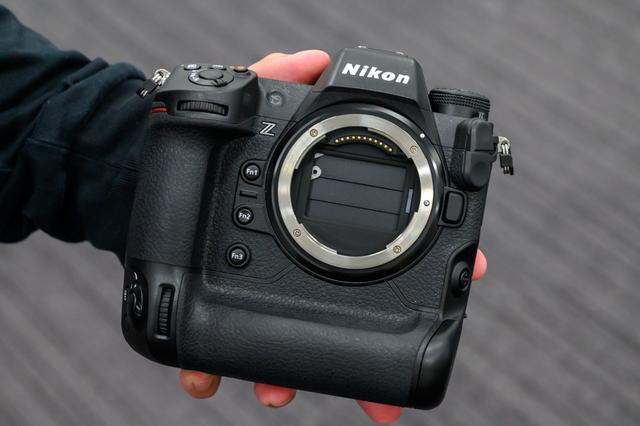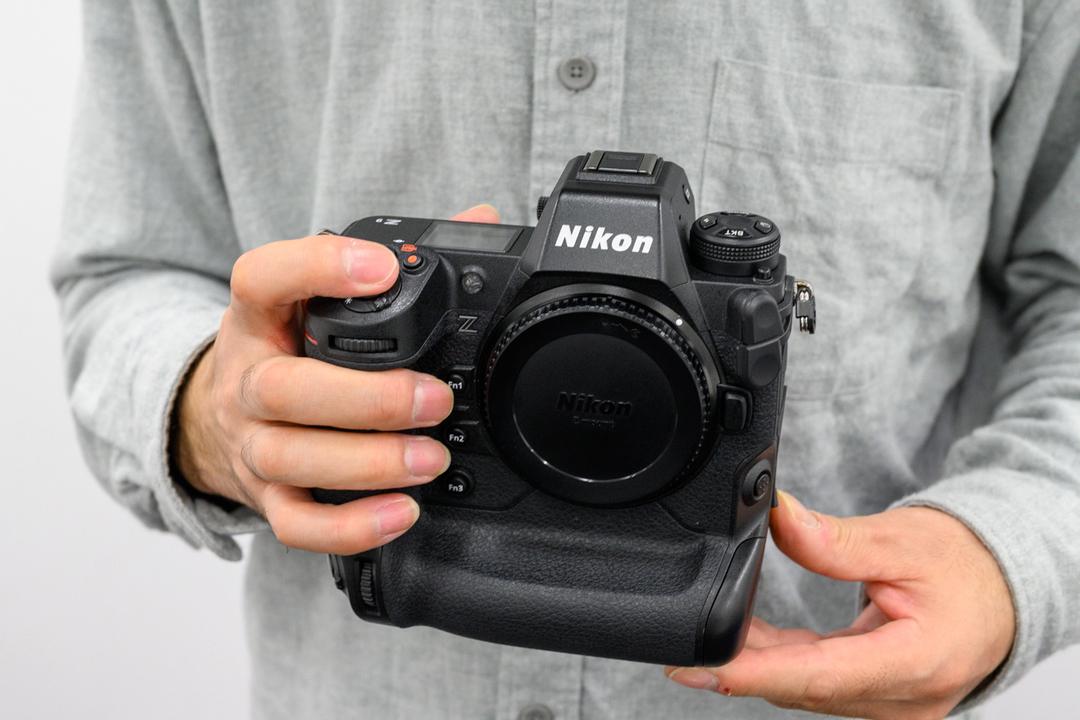"Beats Flex-fragment design special edition" is now on sale on Apple's official website
11/03/2022

Now I have to go mirrorless.
Mirrorless digital cameras with interchangeable lenses are becoming mainstream. On the other hand, even when I was watching the Tokyo Olympics, flagship digital SLR cameras were still the main players in the world of sports and news. Yes, I can hear the voice of digital SLRs saying that they will not give up that seat to mirrorless cameras. But that situation may be coming to an end.
On October 28th, Nikon announced a new camera that had been on the teaser site for some time. Its name is "Z9". It is a mirrorless flagship machine. Speaking of its performance, it has evolved beyond the control of ordinary camera enthusiasts. Is this what Nikon is serious about? So, I will introduce it with a picture of the actual machine.
Z 9's catchphrase is "UNSTOPPABLE." It has the meaning that there is no enemy wherever you go. The manufacturer boasts that both still images and movies are Nikon's best. Here are the basic specs.
Sensor: Newly developed stacked CMOS sensor
Number of effective pixels: 45.7 megapixels
Image engine: EXPEED 7
Common ISO sensitivity: 64-25600
AF range-finding points: 493 points 3D tracking compatible
Maximum continuous shooting frames for still images: 120 frames per second
Video recording function: Supports internal recording up to 8K30p
In-body image stabilization: up to about 6 stops
Shutter mechanism: electronic shutter
Weight (body only): 1,340g
Well, it looks like this.
The number of pixels is the same as the Z 7II, but the sensor is newly developed and the image engine is also a newly developed EXPEED 7. It can be said that it is different. There are many points I would like to introduce, but I will explain the points of interest.
Start with AF. This is the first Nikon mirrorless camera to support 3D tracking (still images only). AF performance is said to be higher than D6. In addition, it supports various subject detection using deep learning.
There are nine types of subjects that can be detected: people, dogs, cats, birds, cars, motorcycles, bicycles, trains, and airplanes. There is no camera other than the Z9 that automatically detects such a subject. Moreover, even if the person is wearing goggles or sunglasses, the eyes can be detected even if the person is upside down. It seems to be suitable for shooting ski moguls.
It is also noteworthy that it does not have a mechanical shutter. Most mirrorless cameras use both a mechanical shutter and an electronic shutter, but the Z9 only has an electronic shutter. In that case, the rolling phenomenon is worrisome. That's the "konjac phenomenon" when shooting fast-moving objects. To prevent this, a mechanical shutter is used together, but the Z 9 does not have it.

This is achieved by the world's fastest scan rate. It is the fastest image sensor camera with 30 megapixels or more, and there is no distortion even when shooting the moment of golf impact. It is because of your confidence that you were able to come up with such a drastic design without a mechanical shutter.
How the EVF looks is a very important point in a mirrorless camera. In that respect, the Z series has a pretty good image, but the Z 9 has evolved further. The EVF is equipped with a newly developed Quad-VGA panel with the world's highest brightness of 3,000 candela. 3 times brighter than before.
And the world's first "Real Live View Finder" is installed. With normal cameras, a phenomenon called "blackout" occurs when the subject momentarily disappears from the viewfinder during continuous shooting, but with this Real Live View Finder, blackout does not occur. This allows you to see every moment and never miss a photo opportunity.
The Z 9 also puts a lot of effort into video recording. Recent mirrorless interchangeable-lens cameras are increasingly capable of recording 4K video, but the Z 9 supports internal recording of 8K 30p video. That's not all. Continuous shooting for up to 125 minutes is possible!
This is pretty awesome, isn't it? Being able to record two hours of video in 8K is a monster class. Moreover, with the firmware update, it will be possible to save 8K 60P in RAW in the camera.
In addition to this, "High Speed Frame Capture +" (11 megapixels) that can shoot at a maximum of 120 frames / second, and 1,000 consecutive shots in RAW + JPEG (Fine) (when using a CFExpress card) ), there are also functions that ordinary people like us will never use. A performance monster that is scary. That's the Z9.
When you actually see the Z9, you'll feel that it's "surprisingly small." But when I pick it up, it feels heavy. It actually weighs 1,340g, which is heavier than the D6's 1,270g (main unit only), but the smaller size makes it feel heavier. However, the weight makes it feel like a flagship machine.
What I found interesting was the sensor shield. The shield that prevents dust from adhering to the CMOS sensor has a three-layer structure like a shutter curtain. This seems to prevent dust from entering.
The rear liquid crystal has a two-step hinge, so you can tilt the camera vertically as well as horizontally. However, if the camera is mounted on a tripod in the vertical position, it seems to interfere with the pan head. Is it alright?
Next is a commemorative photo with the Z series. Thank you for coming to Z 50 and Z 7II. thank you. Looking at the size, the size of the Z 9 stands out. Even the Z 7II looks small. The aperture of the Z mount is quite large, but when you look at the Z50, it feels like the mount protrudes slightly from the body. It will let in a lot of light.
Also from above. The Z 9 and Z 7II have an LCD, but the Z 50 does not.
From the side. From the grip side, all three models have a sufficient thickness for the grip.
In terms of design, there is a sense of unity, and it's nice to have the feeling of "Oh brother!"
Finally, a commemorative photo with the D6 flagship digital SLR camera. Both look imposing, but when you put them side by side, you can see that the Z9 is smaller. Also, the F mount looks smaller. You can see that the arrangement of buttons etc. is designed in the same way as D6.
From an angle. What caught my attention was the red mark on the left shoulder, the symbol of Nikon. This is shorter in Z 9, isn't it? This is common to the Z series.
From the side. After all, the grip part is about the same thickness. The vertical shutter position of the Z 9 is slightly inward.
From above. You can see that the liquid crystal is different and the design of the military executives is different. The number of left dial buttons is also different.
So it was a co-starring of both flagships. The Z9 is scheduled to be released within the year, and the expected market price is around 700,000 yen.
At the same time as the Z 9, two lenses were also announced. The first one is "NIKKOR Z 24-120/4S". A Z-mount version of the easy-to-use 24-120mm lens that Nikon is good at. It seems to be easy to handle with a slim barrel. It weighs 630g. The lens does not have image stabilization. It's so light and slim. The release is scheduled for February 2022. The estimated market price is 154,000 yen.
The other one is "NIKKOR Z 100-400/4.5-5.6S VR". Equipped with a "no center of gravity shift mechanism" that avoids the phenomenon that the center of gravity moves toward the front lens when zooming, which is common with telephoto zooms. Since the center of gravity hardly moves even when zooming, stable shooting is possible even when zooming while holding the camera. It also prevents the lens from dropping due to its own weight. The lens weight is 1,355g. The release is scheduled for February 2022, and the expected market price is 385,000 yen.
The thing that got me the most excited was the Mount Adapter FTZ II! The FTZ converts an F-mount lens to a Z-mount, but the first generation had a tripod mount. This tripod mount is useful, but sometimes it gets in the way... However, the FTZ II has no tripod socket and has a simple circular shape. No, this is it! This is a purchase decision. This is scheduled to be released within the year, and the expected market price is 36,300 yen. The first generation FTZ will also be sold together for a while, but it seems that it will be gradually switched to the FTZ II, so if you want the first generation, please go ahead.
Actually, I love the Z 50, but I still use the D750 and D500. I was hesitant to completely switch to the Z series because I only had DX lenses for the Z mount, and because of the reliability I had been using for many years.
But when I saw the announcement of the Z9 this time, I felt that "Nikon is serious about the Z system." So I thought that I should switch to the Z system soon.
In terms of image quality, the Z system is clearly superior. Even with the Z 50 I feel it. I don't feel like shooting with the D750 anymore.
If you were as hesitant about moving to the Z system as I am, here's what I'd say. "Nikon is serious about the Z system, so you can switch to it with confidence." Alright, let's check the trade-in prices of the D750 and D500!